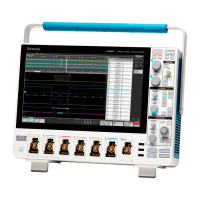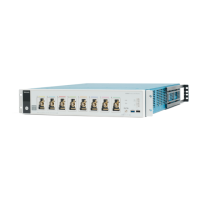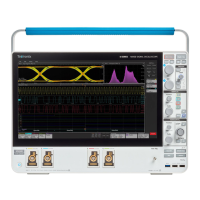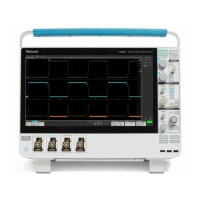The instrument calculates these values as follows:
1. Find the first Mid reference edge in the waveform record or the gated region. This is Edge1.
2. Continuing from Edge1, find the next Mid reference edge in the waveform record (or the gated region) of the opposite direction of
Edge1. This is Edge2.
3. Continuing from Edge2, find the next Mid reference edge in the waveform record (or the gated region) of the same direction as Edge1.
This is Edge3.
Cycle-cycle measurements are made on each cycle of the waveform. In the diagram above a cycle starts at Edge1 and ends at Edge3.
TPOS is the location of the sample just before the trigger point (the time reference zero sample). In other terms, it contains the domain
reference location. This location is where time = 0.
TSOFF is the of
fset between TPOS and the actual trigger point. In other words, it is the trigger sample offset. Values range between 0.0
and 1.0 samples. This value is determined by the instrument when it receives a trigger. The actual zero reference (trigger) location in the
measurement record is at (TPOS + TSOFF).
Missing or out-of-range samples
If some samples in the waveform are missing or off-scale, the measurements will interpolate between known samples to make an
appropriate guess as to the sample value. Missing samples at the ends of the measurement record will be assumed to have the value of
the nearest known sample. The interpolation method can be changed in User Preferences.
When samples are out of range, the measurement will give a warning to that effect (for example, CLIPPING) if the measurement
could change by extending the measurement range slightly. The algorithms assume the samples recover from an overdrive condition
instantaneously.
Math waveforms
Once you have acquired waveforms or taken measurements on waveforms, the instrument can mathematically combine them to create a
waveform that supports your data-analysis task. For example, you might have a waveform clouded by background noise. You can obtain
a cleaner waveform by subtracting the background noise from your original waveform. Or, you can integrate a single waveform into an
integral math waveform as shown below.
Measurement concepts
2 Series MSO MSO24 and MSO22 245
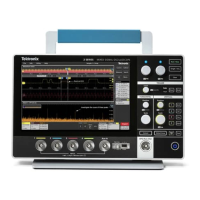
